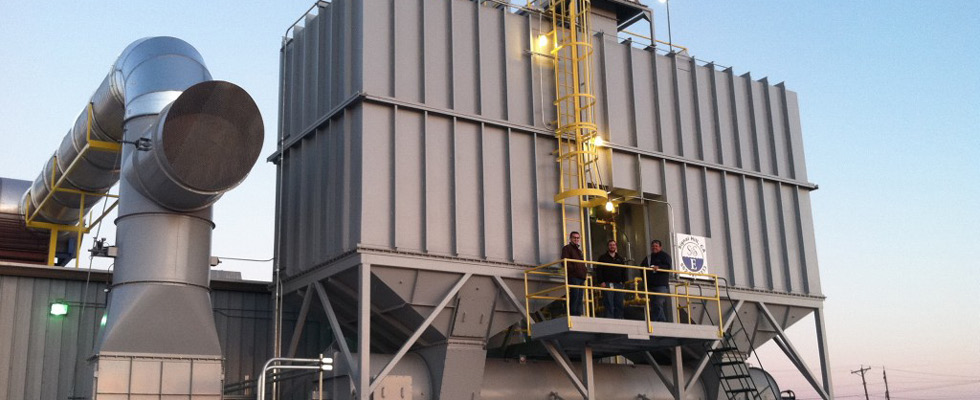
As Texas strengthens its role as a national leader in clean energy production, the state’s growing industrial sector faces a pressing challenge: air pollution and regulatory oversight. With the economy driven by both traditional manufacturing and renewable infrastructure, Texas propane compliance and broader environmental mandates are becoming key factors in how industries manage growth and meet stricter air quality standards.
While the state has seen significant progress in clean energy, it is paired with a sharp rise in industrial emissions scrutiny. Manufacturing operations across the state are being asked to do more than ever to monitor, report and reduce their environmental impact.
A Changing Regulatory Landscape for Texas Propane Compliance
The Texas Commission on Environmental Quality (TCEQ), the state’s primary environmental regulatory agency, has ramped up enforcement and oversight in response to rising emissions events and public concerns. In 2024 alone, the agency conducted more than 10,500 investigations, enforcing stricter compliance across sectors. Notably, emissions events in the Permian Basin have been reduced by more than 50% since 2019, due in part to better monitoring technologies and programs, such as the $134 million Marginal Well Plugging Program aimed at reducing methane leakage from aging infrastructure.
This regulatory momentum reflects broader national and global shifts. The Environmental Protection Agency (EPA) has also introduced stricter standards for volatile organic compounds (VOCs) and hazardous air pollutants, pushing manufacturers across the U.S. to upgrade their emissions control systems. For many Texas industries, particularly those involved in energy-intensive processes like plastics manufacturing, solar panel fabrication or chemical production, compliance now requires significant capital investment, technical expertise and long-term planning.
Engineering for Compliance & Efficiency
To meet these challenges, companies are turning to advanced pollution control technologies that can help them reduce emissions without compromising performance. Among the most widely adopted solutions are regenerative thermal oxidizers (RTOs) — systems designed to capture and destroy VOCs and other harmful emissions produced during manufacturing. RTOs operate by oxidizing pollutants at high temperatures, converting them into harmless byproducts, such as carbon dioxide and water vapor. Modern systems can achieve over 99% destruction efficiency, making them a practical and environmentally responsible choice for manufacturers.
In addition to RTOs, facilities are also adopting custom emission capture systems, heat recovery units and energy-efficient retrofits to reduce their carbon footprint. These technologies not only meet environmental standards but also qualify facilities for local and federal energy incentives, creating a compelling return on investment over time.
Industries adopting these innovations range from flexographic printing and polystyrene molding to asphalt production and biomass recovery. Even niche operations such as barge degassing and fiberglass manufacturing are increasingly integrating tailored emissions control systems to align with local permit requirements and internal sustainability goals.
The Role of Engineering Partnerships
Behind every successful implementation is a carefully planned engineering process. Effective air pollution control requires a full-spectrum approach — from process evaluation and regulatory consultation to custom design, installation and long-term support. Leading environmental engineering firms offer not only technology, but also guidance to help facilities interpret their compliance responsibilities under TCEQ and EPA regulations.
While many companies historically treated environmental compliance as a reactive cost center, today it is emerging as a proactive driver of operational efficiency and corporate responsibility. In fact, forward-looking manufacturers are positioning their sustainability practices as a strategic advantage in attracting customers, investors and talent.
Collaboration Between Industry & Agency
The shift toward cleaner operations is not happening in isolation. Regulatory agencies like TCEQ are facilitating progress through public-private collaboration, grants and knowledge-sharing events. A prime example is the TCEQ Environmental Trade Fair and Conference, held annually to bring together industry leaders, engineers, regulators and environmental advocates. The 2025 edition of the event, which was held June 3-4, focused on emerging best practices and technologies for emissions control, process optimization and permit compliance.
By participating in these forums, companies can better understand how to meet evolving standards — and regulators can learn how to support innovation without stifling economic growth.
Lessons for Other States
Texas represents a unique case study in how industrial growth and environmental protection can coexist. With its massive energy infrastructure, diverse manufacturing base and ambitious clean energy goals, the state faces some of the most complex emissions challenges in the country. Yet it is also developing some of the most effective responses.
The lessons learned here are broadly applicable to other states and regions navigating similar transitions. Whether in the Southeast, the Midwest or along the Gulf Coast, manufacturers are encountering similar pressures to decarbonize while remaining competitive.
By embracing solutions, such as RTOs, capture systems and advanced monitoring technologies — and by working in step with regulators — industries can chart a path that supports both environmental stewardship and economic vitality.
Looking Ahead for Texas Propane Compliance
The future of Texas industry will not be measured by output alone, but by how well it integrates sustainability into its growth strategy. Clean energy production is only one part of the equation. True progress requires reducing emissions across all sectors, especially those at the intersection of traditional manufacturing and emerging energy technologies.
The momentum is there. With innovation, collaboration and a willingness to adapt, manufacturers in Texas and across the United States can continue to lead — responsibly and sustainably — for decades to come.


